HOW-TO: CHARGING CAR BATTERY WITH SLI, EFB AND AGM TECHNOLOGY
WHAT TO PAY ATTENTION TO!
Frequent short trips, stop-and-start traffic, sub-zero temperatures and additional electrical loads have reduced the starting power of your battery. To avoid a total battery failure, you should charge the battery in the spring and autumn at least. It is best to always combine external charging with changing the tyres. We will show you what to look out for when charging vehicle batteries.
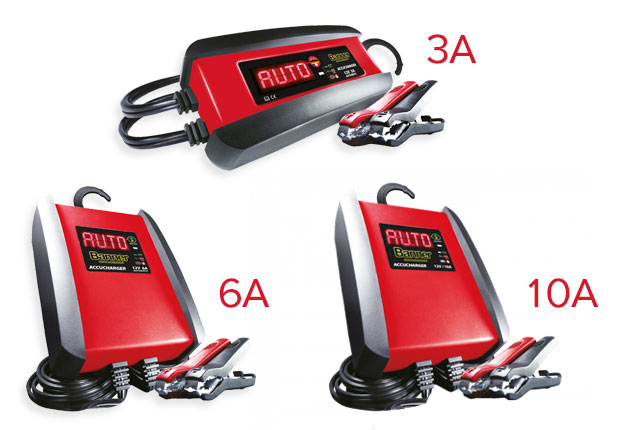
Frequent journeys over short distances, irregular driving profiles along with stop-and-start traffic, daily cold starts in the icy temperatures of last winter, additional electrical consumers such as heated seats and parking or rear window heating and many driving in economy mode have lowered the energy level of your battery start for start and journey for journey.
Treat your battery to an extra boost of external recharging now.
Which charger do I need to use?
As a general rule, fully automatic chargers (charging voltage limitation with 14.8 V) are well suited for charging the battery installed in a vehicle. These charging devices are fully automatic. Depending on the battery capacity, we recommend the following chargers:
- For batteries up to 77 Ah - Banner Accucharger 12V 3A
- For batteries up to 130 Ah - Banner Accucharger 12V 6A Recovery
- For batteries up to 240 Ah - Banner Accucharger 12V 10A Recovery
We also recommend the battery tester so that you can periodically check the battery voltage. BBT DBA - Digital Battery Analyser
In general, the following applies for charging batteries:
It is essential that you check the open-circuit voltage with a battery tester or voltmeter. Please make sure to recharge the battery as soon as an open-circuit voltage limit of 12.5 V has been reached. To be able to measure the open-circuit voltage with a battery tester or voltmeter, you should wait approx. 5 hours after you have finished charging the battery (internally by alternator, externally by charger), or it has not been discharged for at least 1 hour.
Good to know: When maintaining the charge with a Banner Accucharger, the battery is periodically recharged with a small current after it has been fully charged, just to compensate for the battery's self-discharge! This is precisely why there is absolutely nothing to be said against a longer period of trickle charging when using a Banner Accucharger. Simply ideal for longer periods when the vehicle is not in use or for winter storage.
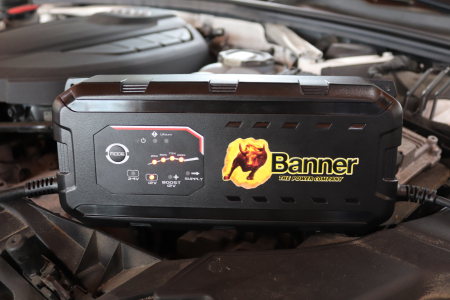
In start-stop cars it is essential to observe the following
If recuperation is also operated in the start-stop vehicle (recovery of braking energy), the AGM or EFB battery works artificially at a lower state of charge of approx. 70% (SOC State Of Charge 70%). In older cars without start-stop function, the battery was always charged to 100% by the alternator. A charge deficit can occur relatively quickly in the start-stop-car and lead to partial or full discharge, even with an almost new battery, and starting problems are then naturally pre-programmed.
Please bear in mind: Especially in winter operation, below 0 degrees Celsius ambient temperature, the battery hardly absorbs any more charging current. At the same time, many power consumers are in operation, such as the rear window heater, seat heater, auxiliary heater and some others more! We are now completely ignoring the Economy (ECO) driving mode, which partially reduces the charging voltage to approx. 12.3V!
SORRY, no more battery is charged in driving mode!
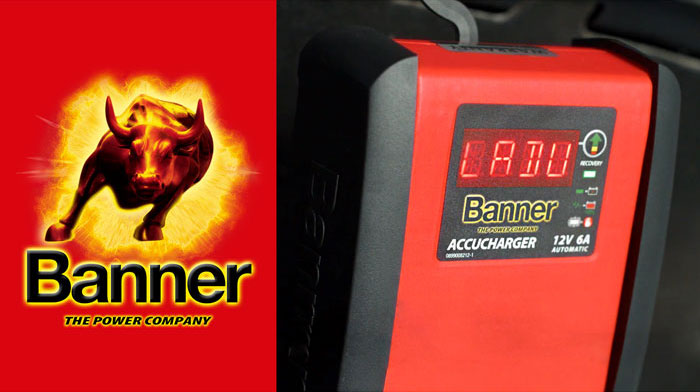
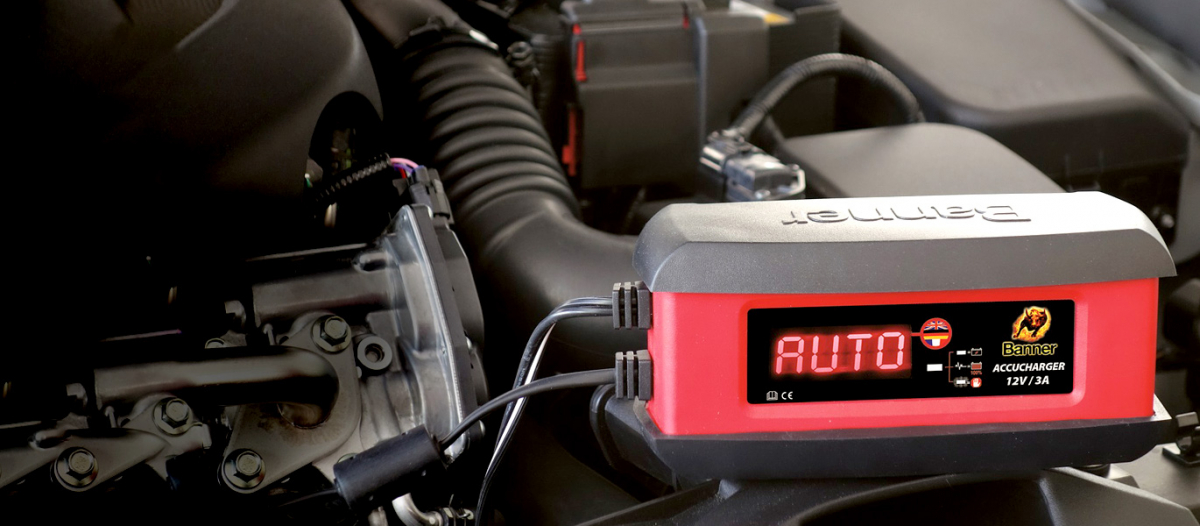
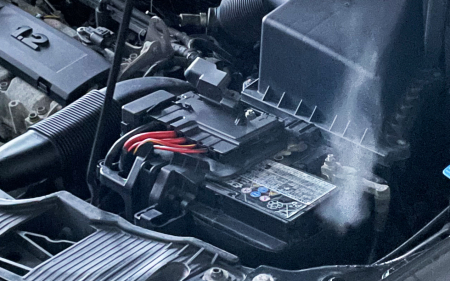
This is exactly what an automatic charger of the Banner Accucharger series prevents!
Under- or overcharging of a battery as shown in the picture.
What happened here?
Charging and subsequently overcharging of a discharged start-stop battery in a garage, unattended overnight of course, with a so-called workshop charger with W-characteristic (falling current with rising voltage = transformer characteristic).
The workshop charger has only one voltage limitation (often only at approx. 15.5V !). The voltage (in volts) rises continuously during the charging process, while the charging current (in amperes) continues to fall. Charging must always be stopped manually in time to prevent overcharging, overheating and excessive gassing of the battery!
PS: The battery also lacks a degassing hose for the correct and safe discharge of oxyhydrogen!
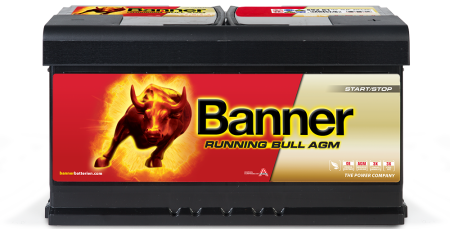
The optimum charging voltage briefly noted, for external chargers.
Please note for AGM batteries:
- Maximum charging voltage must not exceed 14.8V (voltage constant), the gassing voltage is approx. 14.6V! Therefore, always check the design of the alternator in the vehicle.
- Only use voltage-regulated chargers with at least IU characteristic and AGM/GEL charging programme.
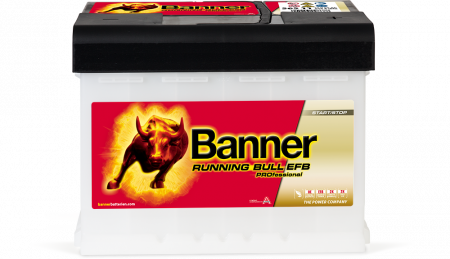
Please note for conventional SLI batteries and EFB batteries (Ca batteries):
- Maximum charging voltage must not exceed 14.8V! Optimum charging voltage for all calcium batteries (Ca) is approx. 14.6 - max. 14.8V, the gassing voltage is approx. 14.6V. Gassing is good for electrolyte circulation, counteracts possible acid stratification, but means some water loss!
- It is best to use voltage-regulated chargers with at least an IU characteristic.
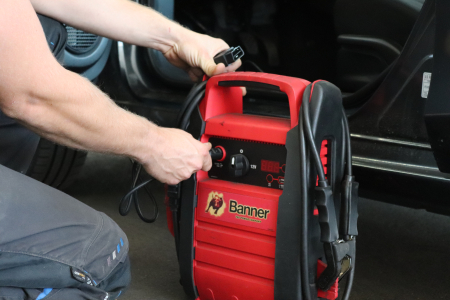
Important note regarding the 15.8V recovery program for deeply discharged batteries, applies to Accucharger 6A Recovery and 10A Recovery, for example!
Please note: At voltages >14.8V, the battery must be disconnected from the on-board electronics or removed from the vehicle. In the worst case, the installed control units could be destroyed by overvoltage, causing enormous damage!
Before disconnecting the battery, consider the external voltage maintenance!
To back up all vehicle settings and data, first connect the voltage maintainer (booster with OBD adapter cable or memory saver) to the OBD socket. This procedure also saves you from having to delete the “power interruption” entry in the error memory afterwards.
Banner tip: The location of the OBD connection in your car, which is sometimes hidden by covers, can usually be found quickly in the vehicle's operating instructions. Or you can find it by searching online. There are also apps and online services that will hopefully provide the correct answer when you enter the make and model. It is mandatory that the OBD interface is located within one meter of the driver's seat. Therefore, it is always located in the passenger compartment, not in the engine compartment or trunk! It is often integrated in or under the dashboard on the driver's side or near the center console.
In general, the following applies:
Fully automatic chargers (charging voltage limited to 14.8 V) are well suited for charging the battery installed in a vehicle. If your charger has an automatic mode with voltages >14.8 V, the battery must be disconnected from the on-board electronics or removed from the vehicle altogether. In the worst case, the installed control units could be destroyed by overvoltage, the resulting damage would be enormous.
Please pay attention to the type of charger. Valuable tips on charging the vehicle can be found in most of the operating instructions issued by the vehicle manufacturer or the charger manufacturer.
All values quoted refer to a room temperature of +25 °C. Caution: Temperature compensation in case of deviation.
Please note:
If the vehicle is also used for recuperation (recovery of braking energy), as is the case in many start-stop car models, the AGM or EFB battery works artificially at a lower state of charge (SOC State Of Charge at approx. 70%). An external periodic 100% full charge is really optimal!
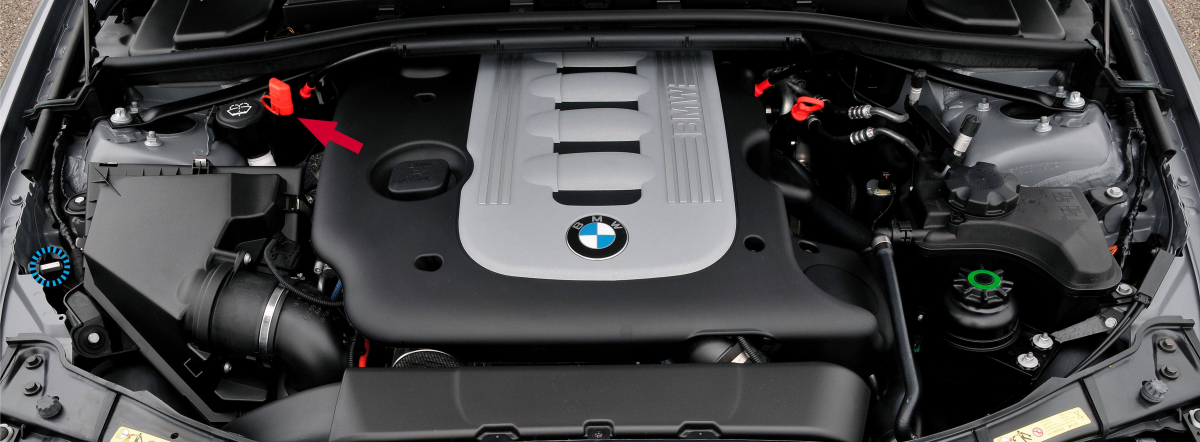
You might also be interested in






